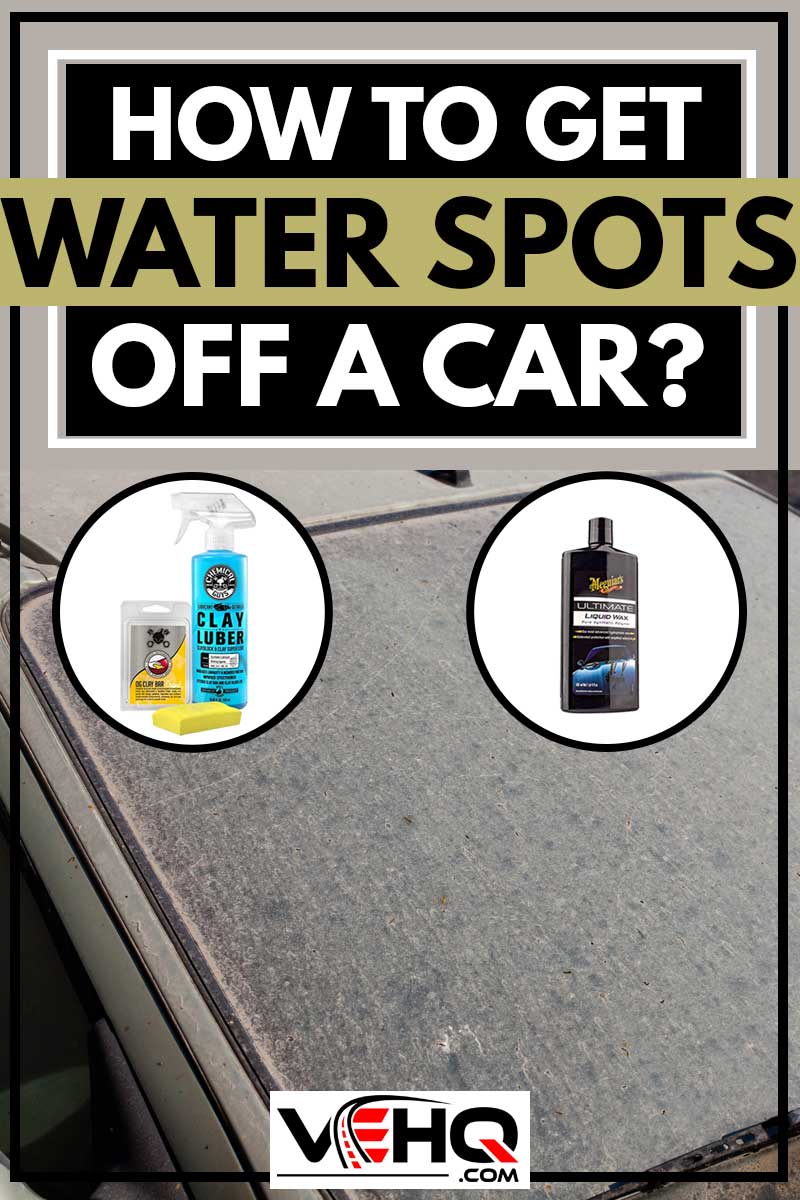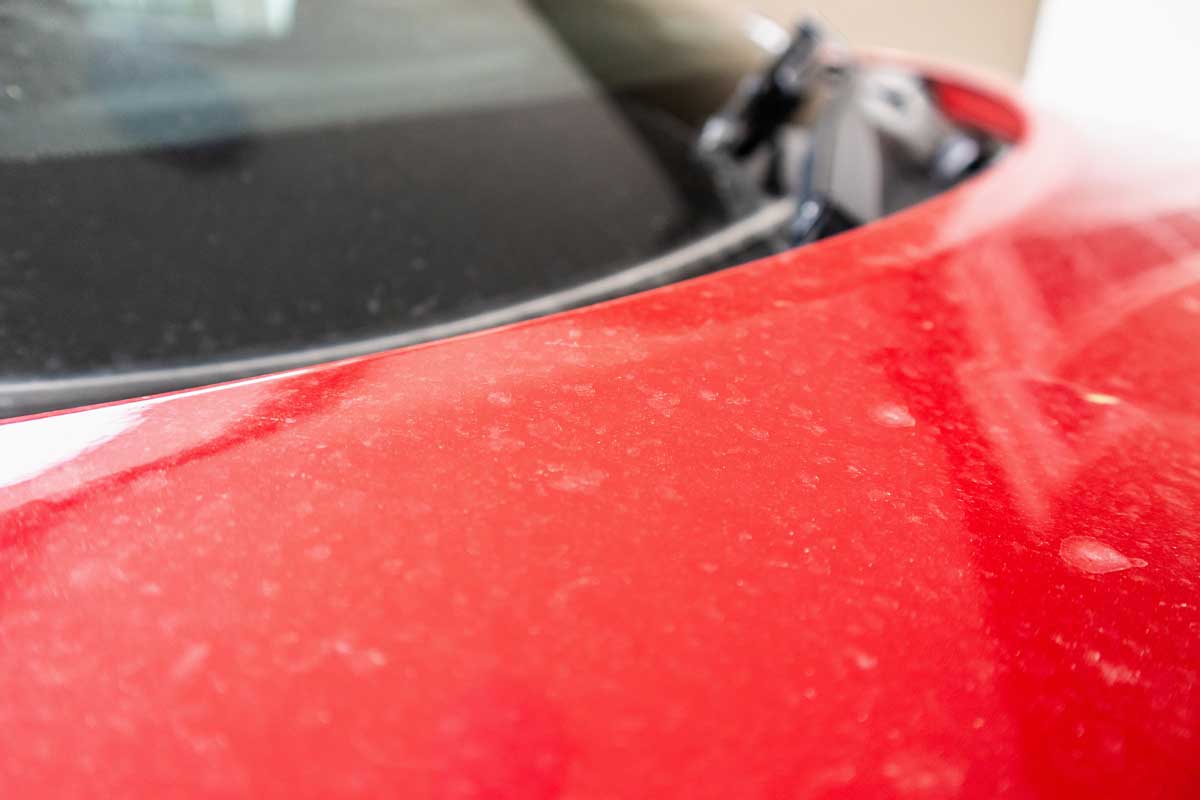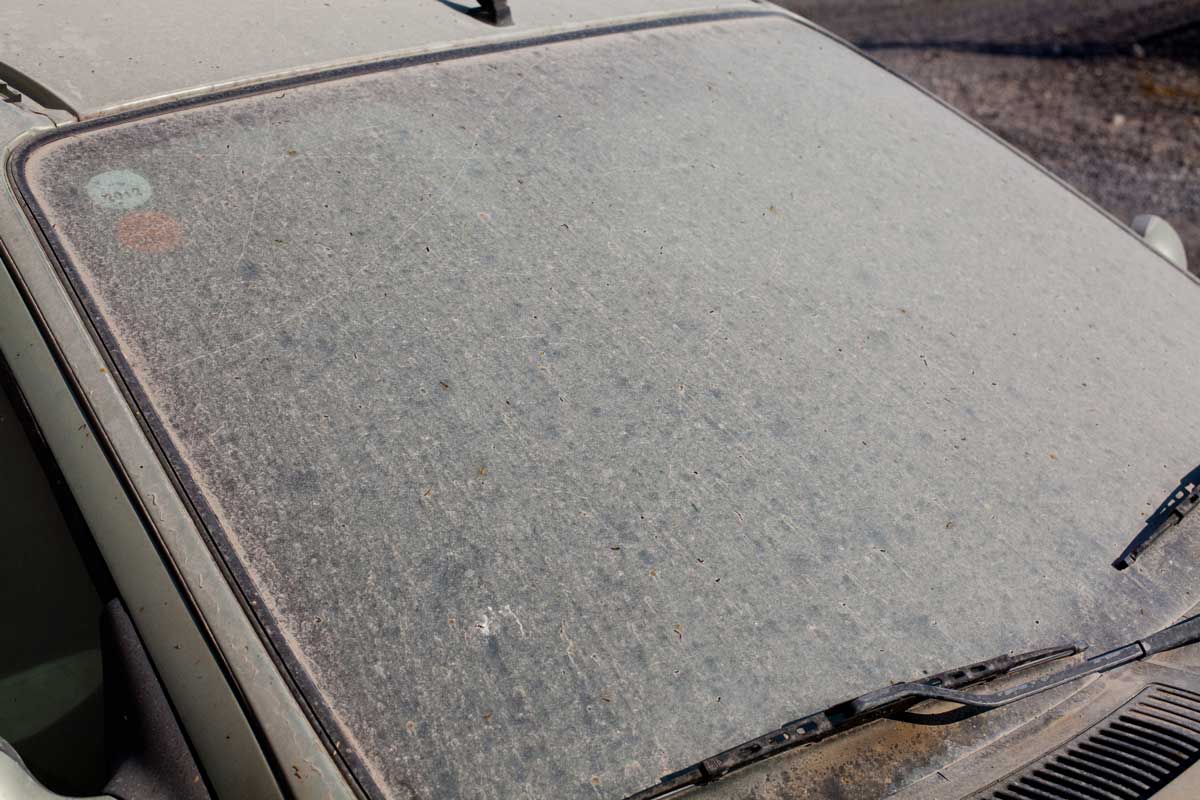 Water spots on your car’s exterior are a nuisance. Those unsightly little whitish spots make even a freshly cleaned car look dirty. Over time, water spots can actually damage your car’s paint if you don’t clean them. Now, you’re probably wondering how to get water spots off a car. We’ve researched the best products and methods for water spot removal to give you the answer.
Water spots on your car’s exterior are a nuisance. Those unsightly little whitish spots make even a freshly cleaned car look dirty. Over time, water spots can actually damage your car’s paint if you don’t clean them. Now, you’re probably wondering how to get water spots off a car. We’ve researched the best products and methods for water spot removal to give you the answer.
First, clean the car using a mild cleanser with a two-bucket wash, and rinse. Then, dry the car using microfiber towels. A thorough wash should remove most, if not all, of the water spots.
But, if water spots persist you can also try:
- Using a detailing spray to quickly remove recently discovered water spots without the need to do a full car wash.
- Wiping down a clean car using a sponge soaked with distilled white vinegar. Let the vinegar stay on the water spots for a few minutes, no need to scrub. Then rinse, and dry the car with a microfiber towel.
- Use a car polish on areas of a clean car that have residual water spots.
- Use a fine-grade auto detailing clay bar with a lubricating solution on areas of a clean car with residual water spots.
After you’ve washed your car and removed the water spots, consider applying a fresh coat of wax to the car’s exterior. Wax will help to protect the paint by repelling water, so your car might not be as susceptible to water spots forming again.
Keep reading to learn how water can leave these annoying spots on your car. We’ve got a few more tips for removing water spots too, so you can easily clean your car and protect against these spots.
What Causes Water Spots?
Any time your car’s exterior gets wet by spray, splash, or rain, the wet surfaces dry naturally either by water running-off or by water evaporating. Sometimes, as water slowly dries by evaporation it leaves behind minerals or contaminants that are in the water but cannot evaporate. These remaining particles create a circular, whitish-colored water spot on your car.
Contaminants in the air can land on your car from dust, industrial fallout, acid rain, and smoke. After a rainfall, for example, any sediments or acids that did not run-off the car with the rainwater and cannot evaporate will leave behind an ugly water spot.
Can Water Spots Damage Car Paint?
Whether a water spot can damage the paint on your car depends on the type of mineral or contaminant left behind and how long the sediment lingers on the car’s surface. If damage does occur to the paint, it is typically on the paint’s outermost clear coat and does not usually affect the base coat.
Limescale
Hard-water from the tap contains a high content of calcium and magnesium. A water spot from hard-water leaves a chalky residue that is easily cleaned off but, if left for a long period of time, can eventually corrode the paint.
Bonding
Pollutants found in smoke, dust, and rain from the surrounding environment can leave residual spots on your car. Sulfuric and nitric acids left behind from acid rain can bond to the topmost, clear surface of the paint to create a dull-looking stain. Using a polish can remove the spot by removing the tiny amount of paint affected in order to smooth out the finish and return the paint to its original luster.
Etching
Etching occurs when minerals or contaminants are dried onto the surface of the paint by extreme heat, such as direct sunlight. The sediments are essentially baked into the paint’s clear coat to cause an observable discoloration or divot. If you are unable to remove the etched spot by polishing, you’ll need to consult a professional to avoid further damage to the paint.
How To Avoid Paint Damage?
Since we rarely know the chemical content of our water sources, the best way to avoid damage is to:
- Wash your car in a shaded area to prevent fast evaporation.
- Towel dry your car after washing with a microfiber towel.
- Wax your car to protect the paint.
- Whenever possible, park your car beneath shelter to prevent water spots forming from rainfall.
- Remove any newly discovered water spots as soon as possible.
Are Water Spots On A Car Permanent?

Water spots are not usually permanent because the remaining sediments can be cleaned away if tended to quickly.
However, residual sediments that have not been cleaned off can bond or etch onto the paint’s clear topcoat, and these spots can cause permanent paint damage.
Permanent water spot damage gives your car’s paint a dull look or uneven finish. It can often be repaired by cleaning, polishing, and waxing to remove the sediment, smooth the surface, restore the shine, and protect the exterior. Longer-term damage from residual water spots that reach beneath the paint’s topcoat will require a professional to touch-up the paint.
Will Waxing Remove Water Spots?
To remove water spots you’ll first want to thoroughly wash your car with a mild cleanser. A two-bucket wash usually does the trick. Rinse. Dry your car with microfiber towels. If the water spots have not been removed, try some of our previously mentioned methods like using vinegar, a clay bar, or polish.
Avoid waxing a dirty car because instead of removing the water spots, the wax can trap remaining sediment between the paint topcoat and wax layer. Beneath the wax, permanent paint damage could occur as residual minerals or contaminants interact with the paint. Waxing a dirty car could also scratch the paint. Wash the car and remove the water spots first, then apply protective wax.
Does Wax Prevent Water Spots?
Wax is a great protectant to use on your car’s exterior paint. Applying wax can prevent water spots from forming due to the fact that water beads against fresh wax. So, the water is more likely to roll-off your car than to slowly evaporate and leave deposits behind.
If the wax on your car is a few months old, you might see water spots start to appear. But, don’t worry because these water spots are on top of the surface of the deteriorating wax which is still protecting the paint beneath from residual deposits. When you wash your car, the water spots and aged wax will be removed. Applying fresh wax to your clean car every three to four months will keep your car’s paint spot-free.
Click here to find this on Amazon.
Does Clay Bar Remove Water Spots?
Auto detailing clay, or clay bar, can be used to remove residual water spots. The clay removes the slightest sediments and contaminants like dust, industrial fallout, and acid rain from your car’s surfaces.
Get The Clay And Lubricant
You’ll want to use a roughly 2-ounce, fine-grade clay bar and the accompanying lubricating spray to clean one entire car. Soften the clay in your hands and when it is malleable you can get started.
Click here to find this on Amazon.
Saturate The Surface And Apply The Clay
Saturate a small section of the car’s surface with lubricating spray. Use your hands to apply moderate pressure to press, pinch, and rub the clay over the lubricated surface. Avoid rolling the clay in a circular motion. Check the clay, and if it appears dirty, fold over the clay until you have revealed a clean edge to rub onto the car’s surface again.

Repeat the process on any sections of the car where you intend to remove water spots. Continue until no more sediment is visibly removed. Dry off the lubricant from the car’s surface by using a microfiber cloth.
Now you know the cause of water spots and how to efficiently remove them from your car’s exterior so, no need to worry about paint damage from a little splash of water.


